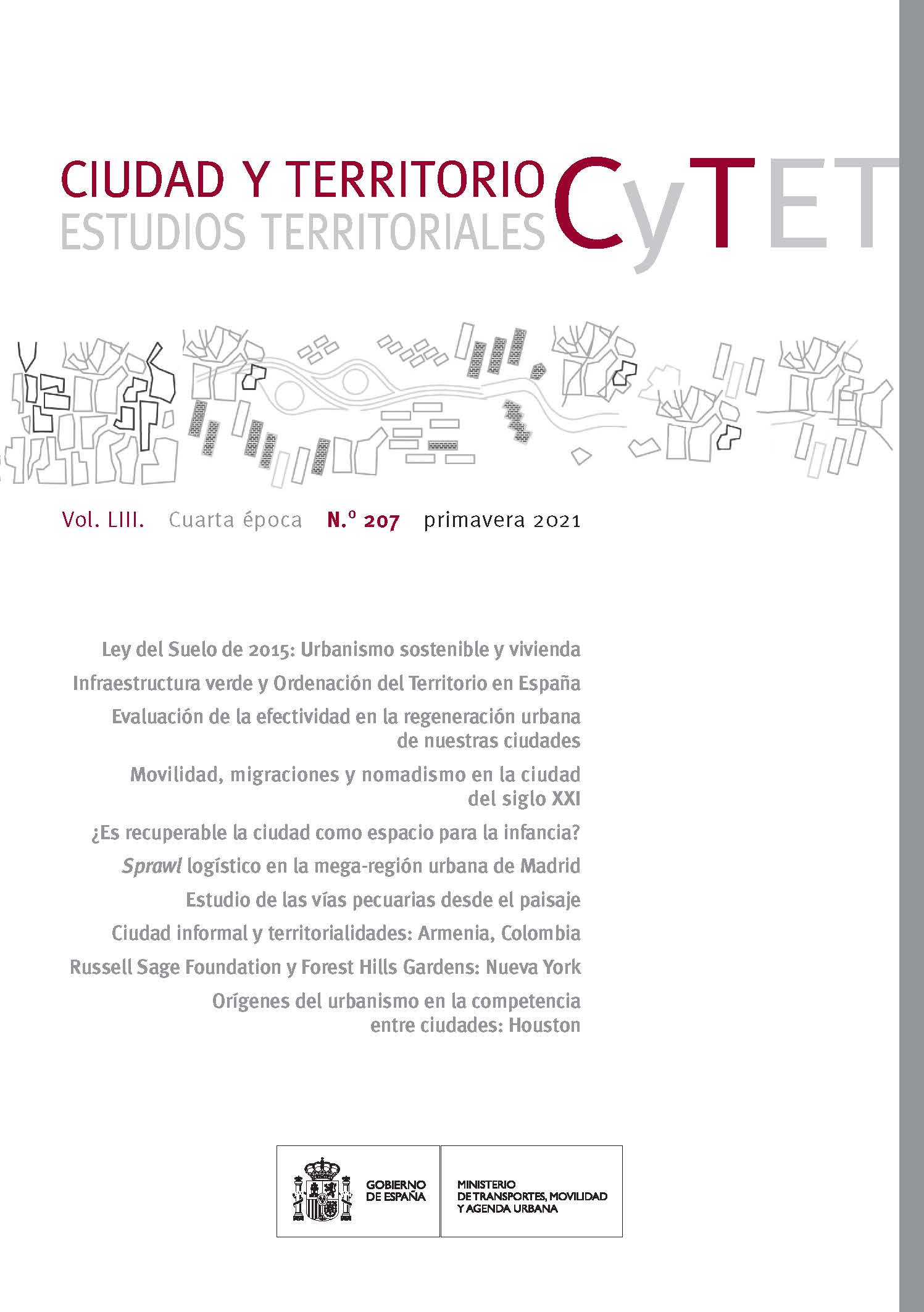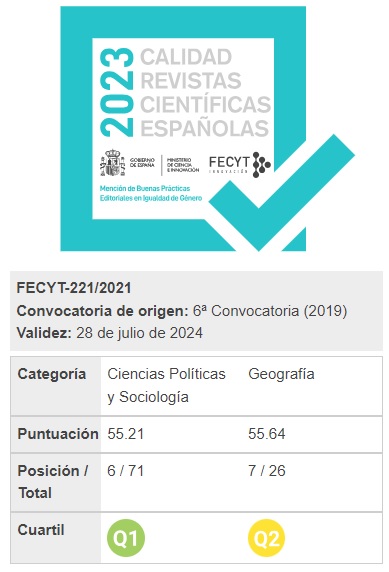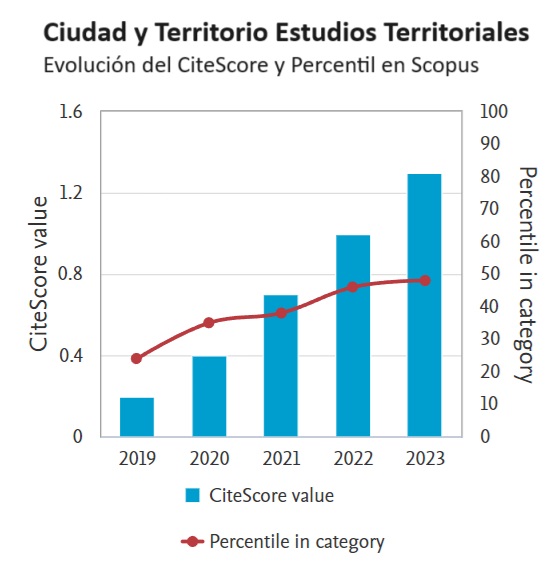Methodological proposal for the study of livestock trails from the landscape: application to the Cordel de Gambogaz (Seville)
DOI:
https://doi.org/10.37230/CyTET.2021.207.07Keywords:
Moving landscape, Livestock trails, Landscape characterization, Methodological proposalAbstract
The relationship between walking, the contemplation of the landscape and the network of roads and livestock trails is argued by resorting to the origin of these roads, that is, trails designed to facilitate the movement of animals at the slow pace of herds and shepherds. Although the function of transhumance is currently residual, the livestock trails are being recovered and used by the competent administrations, with the aim of improving the articulation of the territory through which they pass, favoring biodiversity and landscape diversification in urban environments and, to a large extent, responding to the new citizen demands related to leisure, sports and recreational activities typical of today's society. This work makes a methodological proposal for these public itineraries from the intervention in the landscape, taking as a case study a livestock trail of the Metropolitan Green Corridor of Seville, the Cordel de Gambogaz, which runs between the capital of Seville and the town of Santiponce.
Downloads
Published
How to Cite
Issue
Section
License
Copyright (c) 2021 Darío RIVERA-BLASCO, Javier RUIZ-SÁNCHEZ

This work is licensed under a Creative Commons Attribution-NonCommercial-NoDerivatives 4.0 International License.
Considering the provisions of the current legislation on Intellectual Property, and in accordance with them, all authors publishing in CyTET give -in a non-exclusive way and without time limit- to the Ministry of Transport, Mobility and Urban Agenda the rights to disseminate, reproduce, communicate and distribute in any current or future format, on paper or electronic, the original or derived version of their work under a Creative Commons Attribution-NonCommercial-NoDerivative 4.0 license International (CC BY-NC-ND 4.0), as well as to include or assign to third parties the inclusion of its content in national and international indexes, repositories and databases, with reference and recognition in any case of its authorship.
In addition, when sending the work, the author(s) declares that it is an original work in which the sources that have been used are recognized, committing to respect the scientific evidence, to no longer modify the original data and to verify or refute its hypothesis. Author(s) also declare that the essential content of the work has not been previously published nor will it be published in any other publication while it is under evaluation by CyTET; and that it has not been simultaneously sent to another journal.
Authors must sign a Transfer of Rights Form, which will be sent to them from the CyTET Secretariat once the article is accepted for publication.
With the aim of promoting the dissemination of knowledge, CyTET joins the Open Journal Access (OA) movement and delivers all of its content to various national and international indexes, repositories and databases under this protocol; therefore, the submission of a work to be published in the journal presupposes the explicit acceptance by the author of this distribution method.
Authors are encouraged to reproduce and host their work published in CyTET in institutional repositories, web pages, etc. with the intention of contributing to the improvement of the transfer of knowledge and the citation of said works.








 Enlace a CyTET en Linkedin
Enlace a CyTET en Linkedin